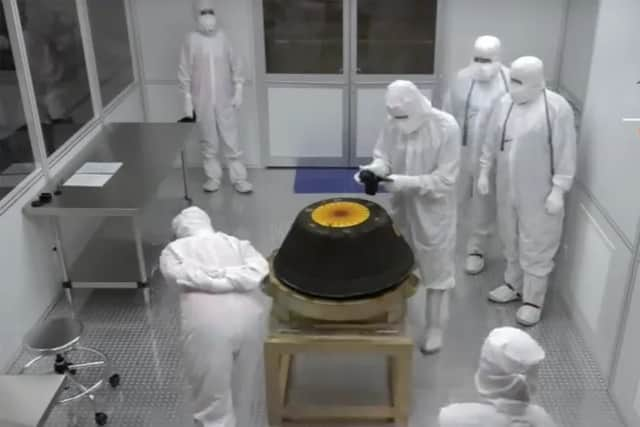Bennu asteroid: scientists gather a large piece of a distant asteroid - what happens now
and live on Freeview channel 276
Scientists have obtained the largest sample ever collected of a distant asteroid on Utah's Test and Training range on Sunday (24 September).
The capsule which contained the rock was released from the spacecraft OSIRIS-REx, which was launched into space seven years ago and collected the sample in October 2020.
Advertisement
Hide AdAdvertisement
Hide AdThe spacecraft did not return to Earth and separated the capsule into the Earth's atmosphere and diverted past the Earth to another asteroid named Apophis.


What happened to the asteroid sample now?
After the sample was retrieved, it was cleaned and disassembled.
Nasa said the components of the sample were packaged and measures were taken to prevent the sample from contamination, and the sample was delivered to Nasa's Johnson Space Center in Houston.
The initial analysis of this sample will be broadcast from the space centre on 11 October.
Advertisement
Hide AdAdvertisement
Hide AdIn six months time, the sample will be released for scientists around the world to study.
Around a quarter of the sample will be distributed among the OSIRIS-REx team, which comprises 233 scientists representing 38 institutions globally.
Around 70% of asteroid material will be stored at NASA’s Johnson Space Center and in a backup facility in White Sands, New Mexico.
“This box when it is opened of material from the surface of Bennu can tell us untold secrets of the origins of the universe, the origins of our planet and the origins of life itself,” said Queen musician Brian May, who helped with the research by mapping out the asteroid to find a landing spot. “What an incredibly exciting day.”
Advertisement
Hide AdAdvertisement
Hide AdSample return missions are exciting as they allow scientists to study a part of the universe undisturbed by the environment on Earth.
“The asteroids in our solar system contain the raw building blocks from which the Earth was made, so working out their composition will tell us a lot of how our planet formed,” said Boris Gansicke from the department of Physics at the University of Warwick.
“There are many open questions, for instance, where did the water that we have on Earth come from? And where did the ingredients that made life possible to develop come from?
“To answer those questions, i.e. measure the composition of an asteroid, you need to get your ‘hands’ on them (or in this case the arm of a space mission), and this is what Osiris-Rex achieved.
“In a nutshell, it’s similar to sitting in front of a delicious dinner and wanting to have the list of ingredients.”
Comment Guidelines
National World encourages reader discussion on our stories. User feedback, insights and back-and-forth exchanges add a rich layer of context to reporting. Please review our Community Guidelines before commenting.
